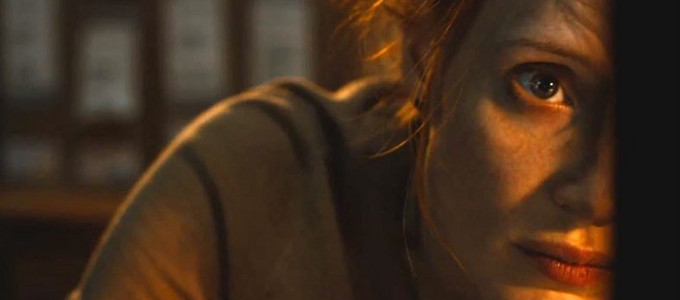When Osama bin Laden was caught and killed in May of 2011, director Kathryn Bigelow and screenwriter Mark Boal were working on a film about the then-futile hunt for the founder of al-Qaeda. The events of ZERO DARK THIRTY are shadowed by that other, unmade film and the story it would have told. Most people experienced the 9/11 attacks on-screen, and ZERO DARK THIRTY can be seen as a weird, wide-screen finale to that viewing experience. Though the audience knows the outcome, the film tends to render a slippery fiction of history; like any story “based on” historical events ZERO DARK THIRTY delivers a complex blend of the two.
Before sifting historical fact from directorial decision, it’s worth stating that ZERO DARK THIRTY is a suspenseful and complicated piece of cinema, purposed to be open to interpretation. Any attempt to analyze the film therefore prods analysis of the facts, which remain murky and morally ambiguous. Cinematic closure to a chapter in history is a strange concept, not without precedent, but demanding a gravity and nuance of approach, a capability Bigelow previously demonstrated in THE HURT LOCKER.
“… a compressed chronicle of the laborious nature of intelligence gathering and the sacrifices made over the decade-long hunt”
The film’s narrative timespan is ambitious, held together by the character of Maya (Jessica Chastain), the CIA operative who first uncovers the flicker of a lead on Bin Laden. Another director might have started at his death, summarising the years spent by Maya-types in a few sentences before the military heroes jump in to kill the bad guy. Bigelow’s film is instead paced according to the formidable, nail-biting patience of the CIA targeters in the Bin Laden unit. The result is a compressed chronicle of the laborious nature of intelligence gathering and the sacrifices made over the decade-long hunt. Prisoners are interrogated, sources come and go, hopes are raised and then dashed. Bombs go off and the viewer knows they will, because the dates are displayed. Still the explosions shock: macabre, unholy punch-lines. They punctuate the longer narrative, reminding us years are passing and of the failures of the CIA and Maya.
The scope of the narrative demands a large cast, and many characters played by named actors are on-screen for only minutes. Combined with sparse characterisation, this occasionally unsettles the flow for the viewer, and might have been averted by casting more unknowns. But the film has more to do than spend time fleshing out even Maya, who has a hollow un-character quality to her, more full of purpose than self. However, the decision to make Maya an interrogator anchors the anti-hero aspects of her character, making of her a human microcosm of the film’s conjectures on the amorality of combat. Her fellow operatives are interpreted with just a hint more detail. The brash, rambunctious team of “canaries,” the US Navy SEALs designated to carry out the final operation, are stock elements whose efficacy is partially their lack of definition.
Visually, the film is also bleak. Interiors and exteriors are CIA black ops sites, dusty, bare rooms and unremarkable views from interchangeable windows. Maya spends half her time in cells or cages with prisoners and the other half peering at grainy footage and photographs, interrupted only by meetings in conference rooms that look the same in Pakistan or Langley, Virginia. Exterior scenes signal danger and usually the camera rises out of the action, keeping the viewer at a distance.
“…narrative choices open up the debate on whether the film is propagandistic in favor of torture”
Much has been said about the dubiousness of the decision to portray torture as having produced the critical intelligence that led to Bin Laden’s capture. This is not known to be the case, and a simple but crucial clarification to the contrary would have contributed to the integrity of the film, leaving the viewer free to consider numerous moral and ethical conundrums of war. As filmmakers who have stated their work is not a documentary, Bigelow and Boal are of course free to re-arrange history in pursuit of drama. But their narrative choices open up the debate on whether the film is propagandistic in favor of torture. This is a shame, because the film’s depiction of torture is horrifically rendered. The first half hour is full of the grisly banality of torturous acts; a rote process is made of destroying another human being’s sense of self, turning their senses against them through exposure to extremes: too much light, too little light, too little space, too much sound, not enough air.
To present torture as part of the film’s narrative is a factual and emotionally honest decision. Horrors are part of war. In ZERO DARK THIRTY they are enacted by characters we identify with, in whose cause we are invested. All that foundation for reflection is undermined by Maya’s declaration that multiple sources have confirmed her lead. Armed with that information, however, one need not view the film as pro-war. There is far more at work here; a tapestry of human nature too complex to be summarised by passing judgment on a single directorial decision. A CIA higher-up is presented engaged in a devout Muslim’s daily prayer, and greets another agent in Arabic: ‘Us against them’ is simple in concept but never in practice. In spite of the pro-torture interpretation, ZERO DARK THIRTY isn’t meant to make the viewer comfortable with any particular political convictions. Boal’s working title was For God and Country; while the semi-parallel aims of al-Qaeda and US forces are provocatively illustrated by that phrase, ZERO DARK THIRTY far better represents the morass of misinformation and half-truths through which Maya sifts.
The opening of ZERO DARK THIRTY is thick with the fear and desperation of the post-9/11 atmosphere, and the acts that were sanctioned in its aftermath. This migrates to a denouement that is a slow taper to the realisation that even with a body in a bag, “mission accomplished” is a loaded, troubled phrase. To frame the capture of Bin Laden merely as military victory is dangerous oversimplification, but ZERO DARK THIRTY does not make that mistake. Although the film operates as a cathartic viewing experience, it raises ghosts and questions that cannot be satisfactorily put to rest. In the final frames, as throughout, there hovers the inference that however necessary the act, death for death is an empty exchange.
httpvh://www.youtube.com/watch?v=EYFhFYoDAo4



